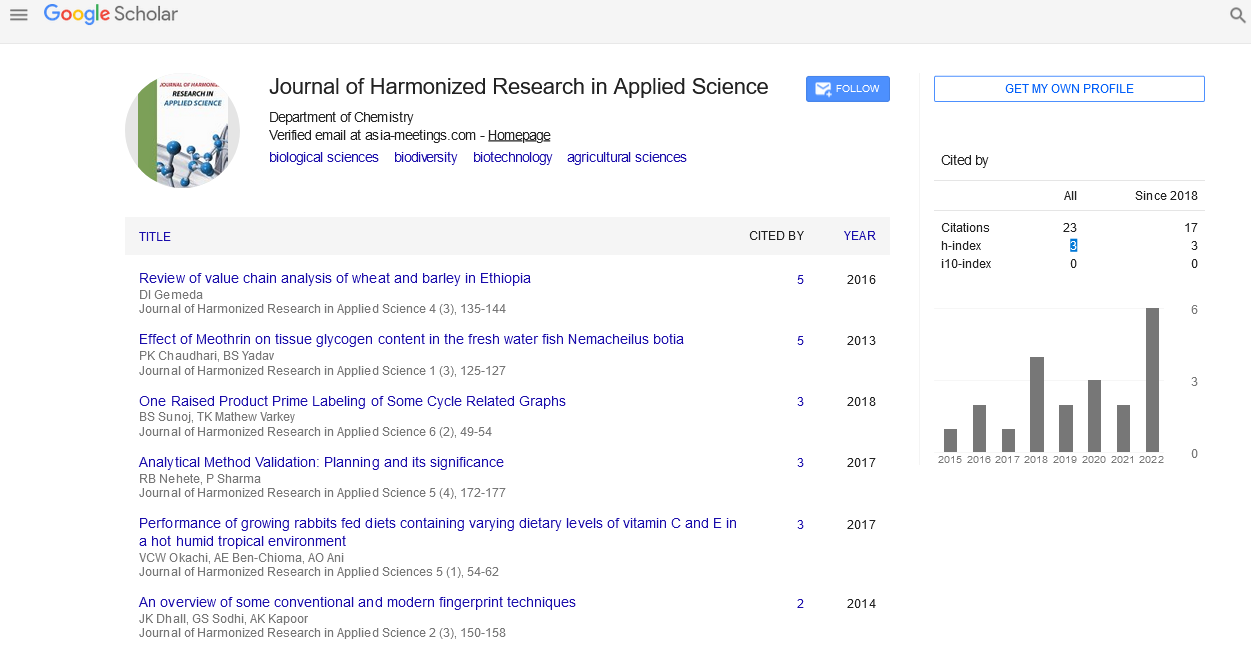Opinion Article - (2022) Volume 10, Issue 1
APPLICATIONS OF NANOTECHNOLOGY FOR DNA ISOLATION
Maura Iversen*Received: Feb 25, 2022, Manuscript No. JHRAS-22-61420; Editor assigned: Feb 28, 2022, Pre QC No. JHRAS-22-61420(PQ); Reviewed: Mar 14, 2022, QC No. JHRAS-22-61420; Revised: Mar 21, 2022, Manuscript No. JHRAS-22-61420(R); Published: Mar 29, 2022, DOI: 10.30876/2321-7456.22.10.02
Description
DNA, a genetic material, has been employed in different scientific directions by DNA nanotechnology over the past few decades, including tissue regeneration, disease prevention, anti- inflammatory, bioimaging, biosensing, diagnosis, antitumor drug delivery, and treatment. It has been used in various scientific directions for its applications. With the rapid advances in DNA nanotechnology, DNA nanomaterials of various shapes and sizes have been designed for the self-organization of molecules based on classical Watson-Crick base pairs. Some DNA materials functionally alter cell biological behaviors such as cell migration, cell proliferation, cell differentiation, autophagy, and anti- inflammatory effects. Several single-stranded DNAs or RNAs with self-pairing secondary structures called aptamers have the ability to be targeted and are selected by the systematic evolution of ligands by exponential enrichment for tumor-directed diagnosis. Used for treatment. Several DNA nanomaterials with three-dimensional nanostructures and stable structures are being studied as drug carrier systems for delivering multiple antitumor or gene therapy agents. Functional DNA nanostructures have facilitated the development of DNA nanotechnology with innovative design and preparatory strategies, showing great potential in biological and medical applications. The principles of different DNA nanomaterial’s summarize biological applications in different disciplines. DNA nanotechnology is used to design and manufacture of artificial nucleic acid structures for technical purposes. In this area, nucleic acids are used as non- bioengineering materials in nanotechnology, not as carriers of genetic information in living cells. Researchers in this field have created static structures such as 2D and 3D crystal lattices, nanotubes, polyhedra, and arbitrary shapes, as well as functional devices such as molecular machines and DNA computers. This field is gradually being used as a tool to solve basic scientific problems in structural biology, biophysics, including applications of proteins to X-ray crystallography and nuclear magnetic resonance spectroscopy to determine structure. The possibility of application to molecular electronics and nanomedicine is also being explored. DNA is one of the most distinctive and intelligent self-assembled nanomaterials. DNA nanotechnology uses predictable self-assembly of DNA oligonucleotides to design and assemble innovative, highly discrete nanostructures. Highly modified DNA motifs can provide an ultra-fine scaffold for next- generation nanofabrication. Most of these applications are based on the complementarity of DNA base pairs such as adenine and thymine and guanine and cytosine. DNA provides a smart way to create nano architectures with programmable and predictable patterns. A strand of DNA wraps around a series of bases along one helix, then switches to the other helix and crosses the crossover site. Nucleic acids (deoxyribonucleic acid (DNA) and ribonucleic acid (RNA)) encode the genomes of all living organisms on Earth. Of these, DNA has become an important biomolecule in genetics, medicine, and biotechnology research. It has a natural ability to self-organize and interact with a wide variety of molecules. In addition to its application in various biological areas such as biomedical, cancer studies and genetic engineering, DNA has a unique property of structural stability, programmability of sequence, and predictable self-refractive properties, nano become a preferred material for the technology. These also useful in development of structures in the range of 1 to 100nm sized from at least one dimension, but “biotechnology” is a technical tool related to organism development refers to a biological molecule. Nucleic acids have one of the most basic substances in life and have a very important biological function. It mainly stores genetic information. By molecular biological applications genetic changes associated with specific health conditions, which are prerequisites for many experiments increase the quality of the extracted nucleic acid directly affects the detection results in subsequent experiments. Traditional nucleic acid extraction methods are both time consuming and labour intensive and require professional training for the operator. Magnetic beads (MB) are recognized as a powerful tool for nucleic acid extraction










